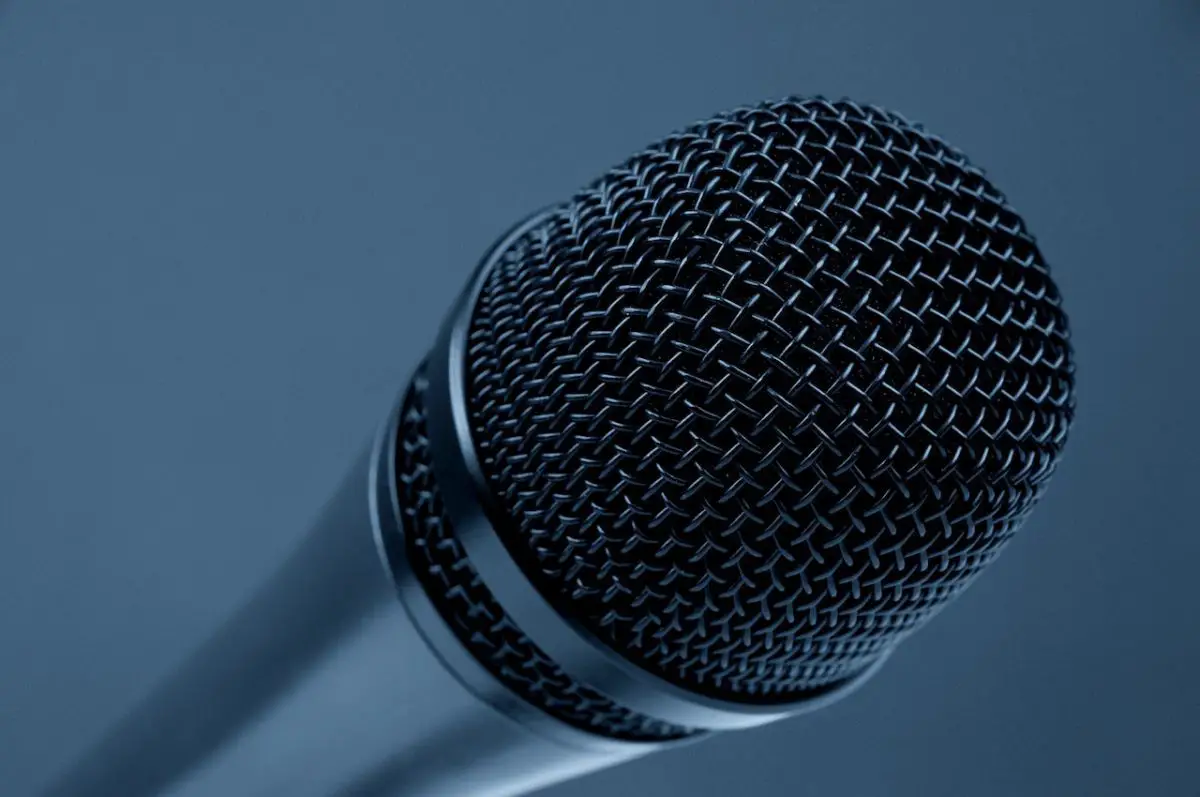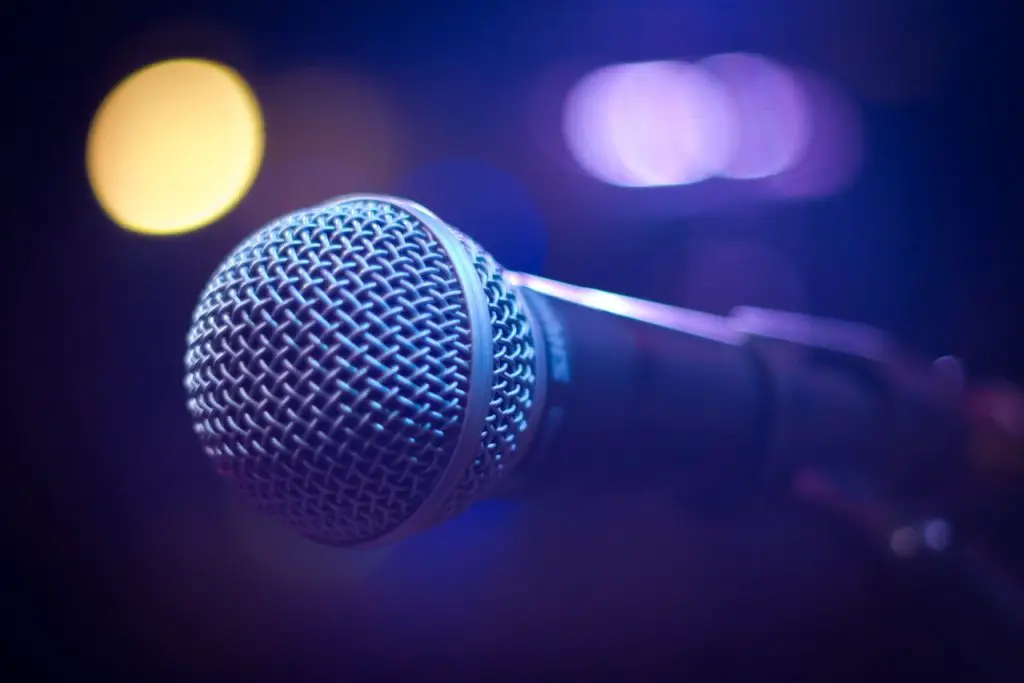A dynamic microphone is an excellent option if you need something that can be used for various purposes, is easy to maintain, and is built to last. They can capture clear recordings of drums, electric guitars, and acoustic guitars, making them popular with singers, podcasters, and voiceover artists. But what exactly is a dynamic microphone, and how do they work? Let’s dive into the world of dynamic microphones and explore what they can do to improve your audio recordings.
What is a dynamic microphone? A dynamic microphone is an audio transducer that changes mechanical wave energy from sound into electrical energy. It does this by using an electrically conductive moving diaphragm and a magnet.
What is a dynamic microphone?
A dynamic microphone is a type of microphone that converts sound waves into electrical signals using electromagnetic induction. It uses a simple and robust design, making it suitable for various applications, both live and in the studio.

A dynamic microphone may either be a moving-coil mic or a ribbon mic. They both have permanent magnets and use electromagnetic induction, but their designs are different. Most dynamic microphones are plug-and-play and can be used without external power.
AKAI Professional MPK Mini MK3

AKAI Professional MPK Mini MK3
How do dynamic microphones work?
The microphone itself works based on electromagnetic principles. A thin metal plate called a diaphragm is connected to a coil of wire in a dynamic microphone. This is how the microphone picks up sound waves.
When a sound wave hits the diaphragm, it causes it to vibrate, which in turn causes the coil to shake. The magnetic field is created by a magnet housed within the coil. When the coil moves in the magnetic field, the electrical signal representing the picked-up sound is made.
A dynamic microphone works on the same electromagnetic induction principles as an electric generator.
A dynamic microphone works on the same electromagnetic induction principles as an electric generator. When the microphone’s diaphragm vibrates, an electrical current is generated. The magnitude of the electric current is proportional to the velocity of the motion.
A dynamic microphone’s output is smooth and well-rounded, with a pleasant, natural tone. The cardioid polar pattern is standard in most of these microphones. The cardioid polar pattern the microphone uses helps to eliminate background noise when recording.
What are the different types of dynamic microphones?
Depending on your needs, you may choose between two different kinds of dynamic microphones:
- Moving coil: Dynamic microphones with a moving coil are the most common. A coil of wire connected to a diaphragm is used with a magnetic field. A voice or other sound source that causes the diaphragm to vibrate will also cause the coil to vibrate, producing an electrical signal.
- Moving ribbon: Dynamic microphones with a moving ribbon are among the most sensitive types available. When recording jazz, folk, blues, or more subdued vocals, a ribbon microphone is a way to go because it captures the music’s ambiance. A thin aluminum foil ribbon is sandwiched between two magnets in a ribbon microphone. When sound waves strike the ribbon, the resulting vibrations will be translated into audible tones.

When should you use a dynamic microphone?
When should you reach for a dynamic microphone in your arsenal? Well, here’s the lowdown:
- Live performances: Dynamic microphones are the go-to choice for live performances, whether it’s a rock concert, hip-hop gig, or a lively jam session. Their rugged construction can handle high sound pressure levels without distortion, making them perfect for capturing vocals, instruments, and even the occasional drum hit on stage. They’re built to withstand the demands of the live environment, so you can rock out with confidence!
- Studio recordings: While condenser microphones often steal the spotlight in the studio, don’t underestimate the power of a good ol’ dynamic microphone. They excel at capturing punchy and dynamic sounds, making them ideal for recording loud sources like electric guitars, bass amps, snare drums, and aggressive vocals.
- Broadcasting and podcasting: Dynamic microphones are also a popular choice for broadcasting and podcasting applications. Their excellent off-axis rejection helps minimize unwanted background noise, ensuring a focused and clear sound capture. Whether you’re hosting a radio show, recording a podcast interview, or providing voice-overs, a dynamic microphone can be your trusty companion.
- Outdoor and location recording: When you venture into the great outdoors for field recording or capturing ambient sounds, dynamic microphones can be your reliable partner. Their robust construction and resistance to moisture and wind make them suitable for capturing sound in challenging environments.
Advantages and disadvantages of dynamic microphones
Dynamic microphones, like any other tool, come with advantages and disadvantages. Let’s examine the pros and cons of utilizing a dynamic microphone now that we know how they work.
Advantages of dynamic microphones
Here are some of the benefits of using dynamic microphones.
- The pleasant tone they provide is ideal for uses like voiceovers.
- They can function without any external power supply.
- They have a high tolerance for volume.
- They are hardy and able to withstand a lot of punishment.
- They’re multipurpose and have a wide range of uses.
- They are skilled at handling plosive sounds.
- They tend to be rather inexpensive.
Disadvantages of dynamic microphones
Here are some disadvantages of using a dynamic microphone.
- They could be better when it comes to capturing subtle noises.
- There is some loss of high-frequency information.
- Harmonics in recordings are too much for them.
- You may lose some sonic detail in recordings.
- You’ll need to go close to the diaphragm to get a good read.
Frequently asked questions (FAQ)
Do you still have questions? Below are some of the most commonly asked questions about dynamic microphones.
What’s the difference between condenser and dynamic mics?
Condenser microphones have a diaphragm charged with electricity that moves when sound waves hit it. When the diaphragm moves in response to an acoustic stimulus, it sends an electrical signal. Additionally, in condenser microphones, you often choose between having a small diaphragm or a large diaphragm. And Dynamic mics can handle sound pressures better than condenser mics.
Do I need a preamp for a dynamic microphone?
A preamp is always needed to boost the weak signal that a dynamic microphone sends out. It’s the same for in-studio and on-stage use. But depending on the mixer or audio interface you plan to use, you might not need to buy a separate preamplifier.
Do dynamic mics need phantom power?
Since dynamic microphones don’t have any active electronics inside, they don’t need phantom voltage to power them. However, using phantom power will not damage the microphones.
Why do streamers use dynamic mics?
Although not as sensitive as condenser microphones, dynamic microphones create high-quality sound. Many streamers use them because they’re cheaper, more resilient, and more long-lasting than the alternatives.
Do I need a separate power source for a dynamic microphone?
No, dynamic microphones do not require an external power source, such as phantom power, to operate. This makes them more convenient for use in various situations, as they can be connected directly to a mixer, audio interface, or other recording devices without the need for additional power supplies.
Conclusion
Well, my audio aficionados, we’ve journeyed together through the electrifying world of dynamic microphones, and now it’s time to wrap things up—much like a sound engineer after a long gig. So, did I manage to strike a chord with you on all things dynamic microphones? And did I cover everything you wanted to know? Let me know in the comments section below. I read and reply to every comment. If you found this article helpful, share it with a friend, and check out my full blog for more tips and tricks on audio recording and gear.
Key takeaways
This article covered what is a dynamic microphone. Here are some key takeaways:
- Dynamic microphones use electromagnetism to transform sound waves into electrical impulses.
- Depending on your needs, you may choose between ribbon and coil microphones.
- Most dynamic microphones are plug-and-play and can manage without power.
- The diaphragm of a dynamic microphone is coupled to a wire coil, and the microphone operates based on electromagnetic principles.
- Small diaphragm microphones are good at picking up higher frequencies and are great at keeping a consistent polar pattern due to their size and weight.
- Dynamic microphones are optimal for use with guitar amplifiers, brass instruments, heavy vocals, and drum kits.















